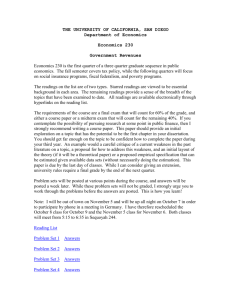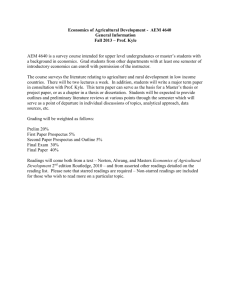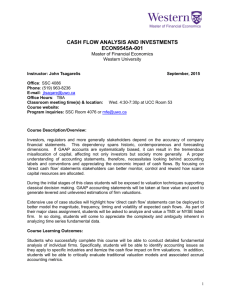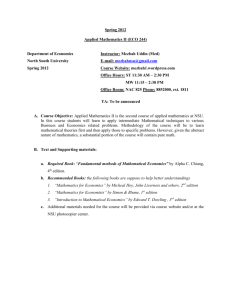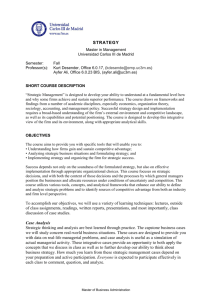Macroeconomic Theory I
advertisement
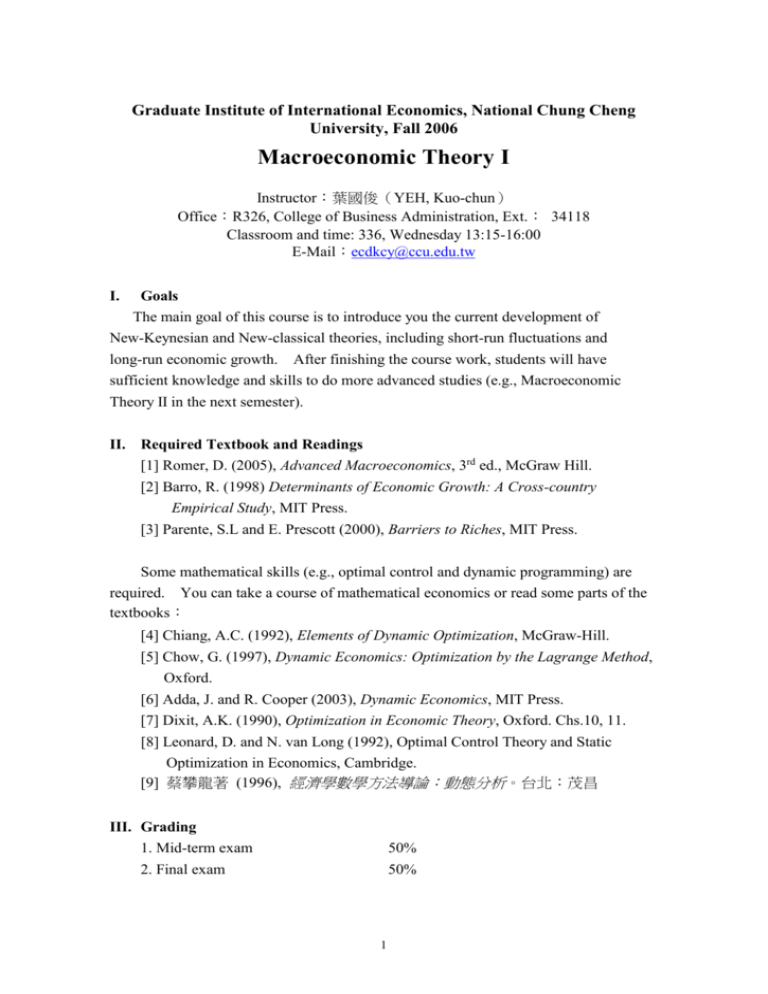
Graduate Institute of International Economics, National Chung Cheng University, Fall 2006 Macroeconomic Theory I Instructor:葉國俊(YEH, Kuo-chun) Office:R326, College of Business Administration, Ext.: 34118 Classroom and time: 336, Wednesday 13:15-16:00 E-Mail:ecdkcy@ccu.edu.tw I. Goals The main goal of this course is to introduce you the current development of New-Keynesian and New-classical theories, including short-run fluctuations and long-run economic growth. After finishing the course work, students will have sufficient knowledge and skills to do more advanced studies (e.g., Macroeconomic Theory II in the next semester). II. Required Textbook and Readings [1] Romer, D. (2005), Advanced Macroeconomics, 3rd ed., McGraw Hill. [2] Barro, R. (1998) Determinants of Economic Growth: A Cross-country Empirical Study, MIT Press. [3] Parente, S.L and E. Prescott (2000), Barriers to Riches, MIT Press. Some mathematical skills (e.g., optimal control and dynamic programming) are required. You can take a course of mathematical economics or read some parts of the textbooks: [4] Chiang, A.C. (1992), Elements of Dynamic Optimization, McGraw-Hill. [5] Chow, G. (1997), Dynamic Economics: Optimization by the Lagrange Method, Oxford. [6] Adda, J. and R. Cooper (2003), Dynamic Economics, MIT Press. [7] Dixit, A.K. (1990), Optimization in Economic Theory, Oxford. Chs.10, 11. [8] Leonard, D. and N. van Long (1992), Optimal Control Theory and Static Optimization in Economics, Cambridge. [9] 蔡攀龍著 (1996), 經濟學數學方法導論:動態分析。台北:茂昌 III. Grading 1. Mid-term exam 2. Final exam 50% 50% 1 3. Samples before the exams V. optional Studying topics 1. Introduction. Readings: Mankiw, G (2006), The Macroeconomists as Scientist and Engineer, NBER working paper 12349 (www.nber.org) 2. Useful mathematical tools: Law of dynamic motion and optimal controls. Readings: [4], [5], [6], [7], [8], [9] 3. Micro-foundation: From Solow model to Ramsey model and Diamond overlapping generation model. Readings: [1] chapters 1-2 4. New growth theory. 5. Empirics of economic growth. 6. Barriers to riches: Introduction to theory of relative income levels. Readings: [3] 7. Real business cycle theory. 8. New Keynesian model with real rigidity. Lucas’s imperfect information model and its implications. Readings: [1] chapters 5-6 Readings: [1] chapter 3 Readings: [2] Readings: [1] chapter 4 Week 9: Mid-term exam Week 18: Final exam 2
